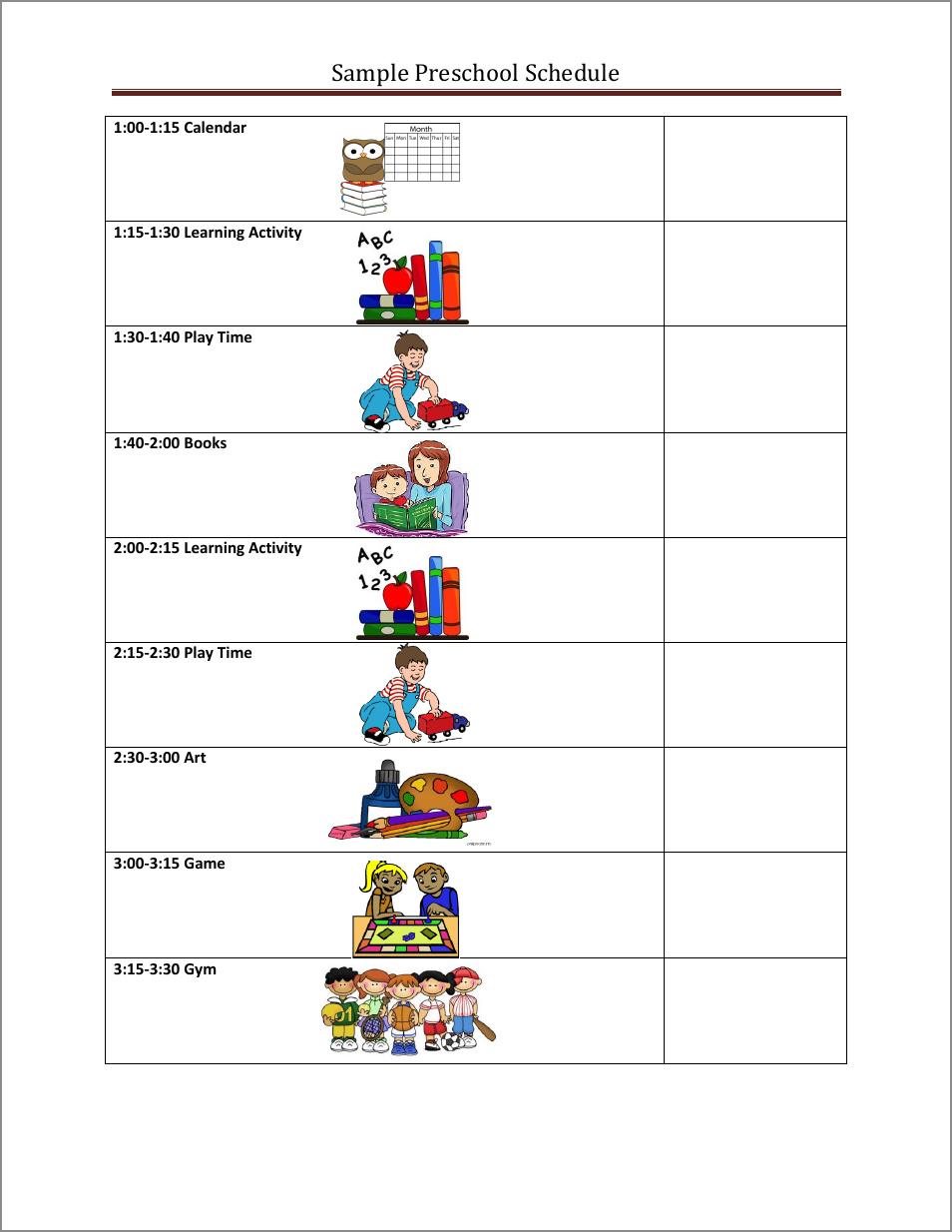Preschool is an important time in a child’s life, when they begin to explore and learn about the world around them. A well-planned daily preschool schedule can provide a structured environment that promotes both learning and play.
In this article, we will explore the benefits of a daily preschool schedule, what it entails, and how to create an effective one.
Why is a Daily Preschool Schedule Important?
A daily preschool schedule provides a sense of routine and structure for young children. It helps them understand what to expect throughout the day and creates a safe and predictable environment. Having a consistent schedule also promotes a child’s sense of security and helps them develop important life skills such as time management and self-regulation.
Furthermore, a well-planned daily preschool schedule allows for a balanced combination of learning and play. It ensures that children engage in a variety of activities that promote their cognitive, social, emotional, and physical development. By following a schedule, teachers can also monitor and track each child’s progress and identify areas that may need additional attention.
What Does a Daily Preschool Schedule Look Like?
A daily preschool schedule typically includes a mix of structured activities, free play, and rest periods. The specific activities and their duration may vary depending on the age of the children and the goals of the preschool program. Here is an example of a typical daily preschool schedule:
- 8:00 AM – 8:30 AM: Arrival and Free Play
- 8:30 AM – 9:00 AM: Circle Time (songs, stories, and calendar activities)
- 9:00 AM – 9:30 AM: Art and Craft
- 9:30 AM – 10:00 AM: Snack Time
- 10:00 AM – 10:30 AM: Outdoor Play
- 10:30 AM – 11:00 AM: Math and Science Activities
- 11:00 AM – 11:30 AM: Music and Movement
- 11:30 AM – 12:00 PM: Lunch
- 12:00 PM – 12:30 PM: Story Time
- 12:30 PM – 1:00 PM: Rest Time
- 1:00 PM – 1:30 PM: Sensory Play
- 1:30 PM – 2:00 PM: Outdoor Play
- 2:00 PM – 2:30 PM: Circle Time (reviewing the day and preparing for dismissal)
- 2:30 PM – 3:00 PM: Departure
This is just one example, and schedules can vary based on the needs and preferences of the preschool. It is important to strike a balance between structured activities and free play, as both are essential for a child’s development.
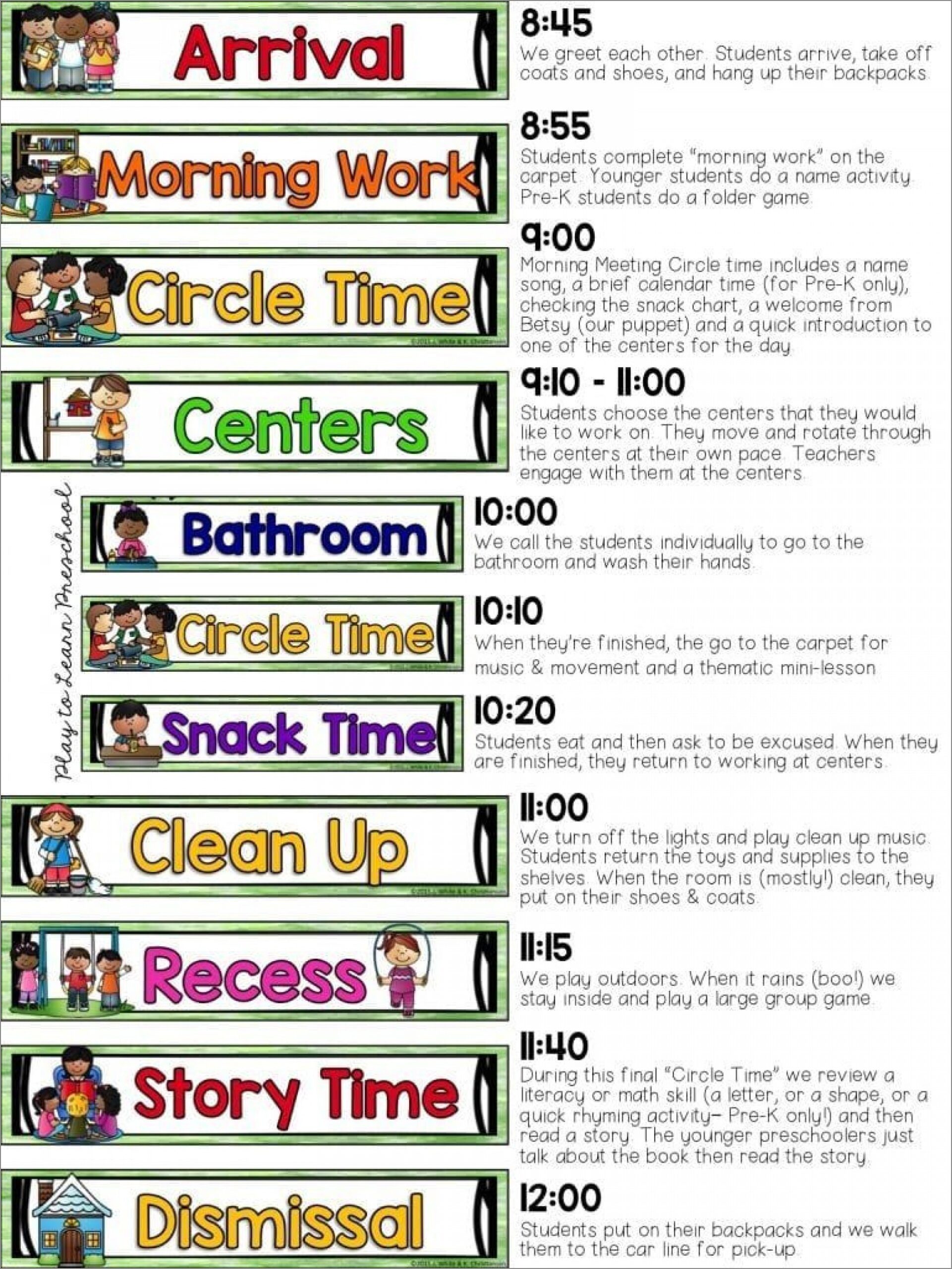
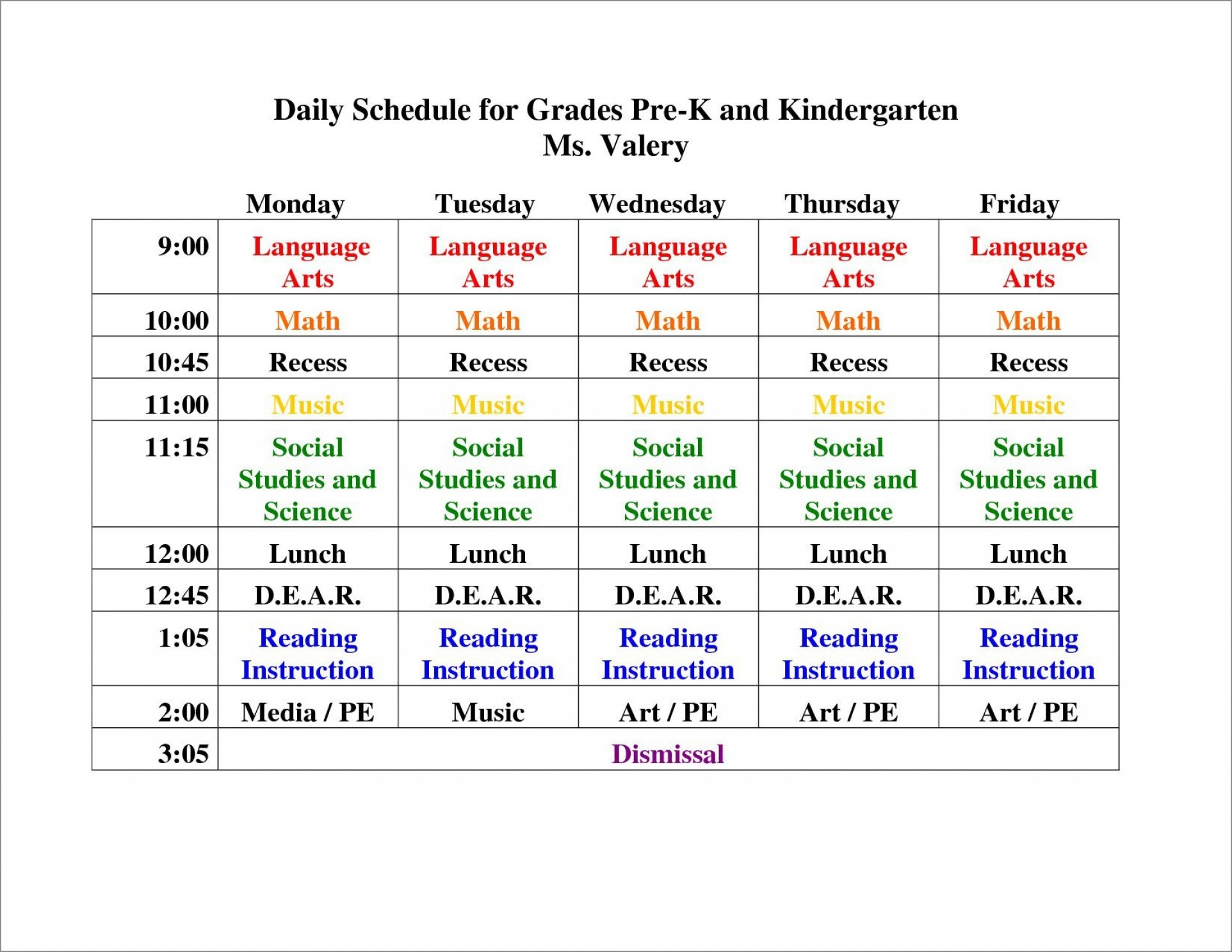
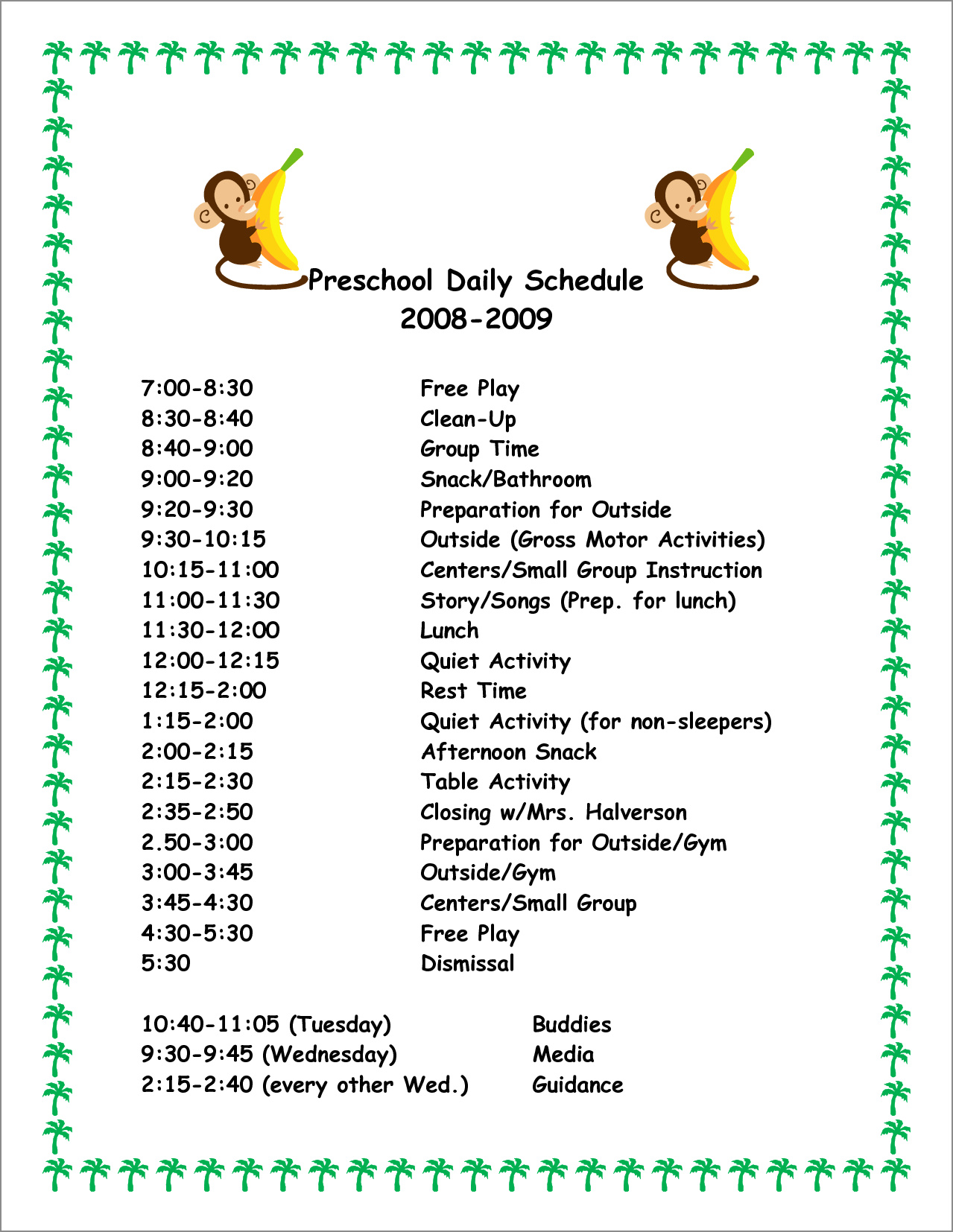
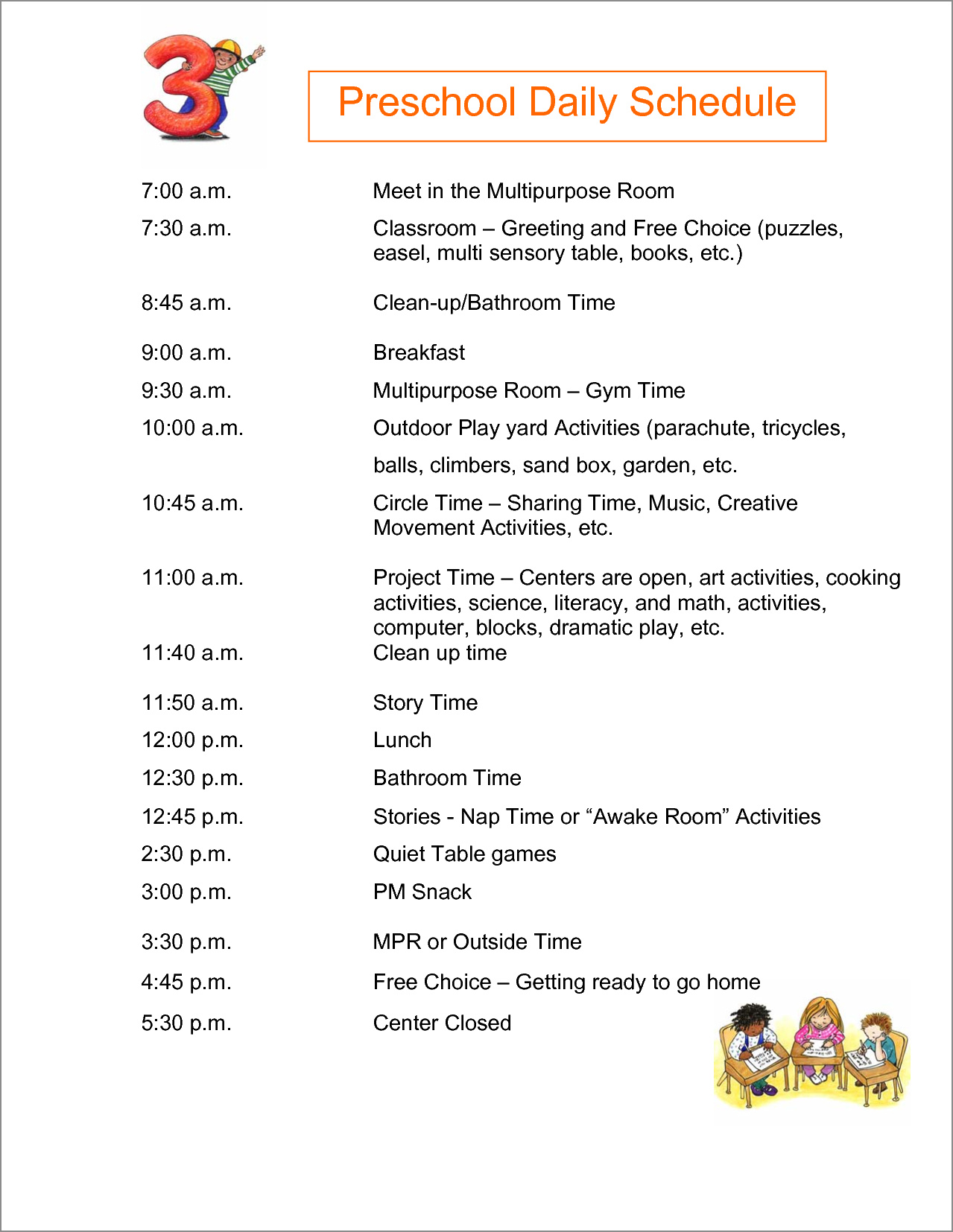
How to Create an Effective Daily Preschool Schedule
Creating an effective daily preschool schedule requires careful consideration of various factors, including the age of the children, the goals of the preschool program, and the resources available. Here are some steps to follow:
1. Determine the Goals and Objectives
Identify the specific goals and objectives of the preschool program. These may include promoting social skills, enhancing cognitive abilities, fostering creativity, or developing physical coordination. Understanding the desired outcomes will help guide the selection of activities and the allocation of time.
2. Allocate Time for Different Activities
Divide the day into different time slots and allocate time for various activities such as circle time, art and craft, outdoor play, and rest periods. Consider the attention span and energy levels of the children when determining the duration of each activity.
3. Plan for Flexibility
While it is important to have a structured schedule, it is also essential to allow for flexibility. Children may need more or less time for certain activities, and unexpected events may arise. Build in some buffer time to accommodate these situations and be prepared to make adjustments as needed.
4. Include Transitions
Transitions between activities are an important part of the daily preschool schedule. Plan for smooth transitions by incorporating songs, chants, or other fun activities that help children move from one activity to another. This can help minimize disruptions and create a sense of flow.
5. Communicate with Parents
Keep parents informed about the daily preschool schedule. Share the schedule with them and provide regular updates about their child’s progress and any changes in the routine. This open communication helps build trust and allows parents to reinforce learning at home.
6. Evaluate and Adjust
Regularly evaluate the effectiveness of the daily preschool schedule and make adjustments as necessary. Observe how children respond to different activities and consider their feedback. Flexibility and continuous improvement are key to creating a schedule that meets the needs of the children.
The Benefits of a Well-Structured Daily Preschool Schedule
A well-structured daily preschool schedule offers numerous benefits for both children and teachers:
- Promotes Learning: A structured schedule ensures that children engage in a variety of activities that promote their cognitive, social, emotional, and physical development.
- Develop Routine and Time Management Skills: Following a schedule helps children develop a sense of routine and learn how to manage their time effectively.
- Fosters Independence: A daily preschool schedule encourages children to become more independent as they learn to follow instructions, transition between activities, and take responsibility for their belongings.
- Enhances Social Skills: Structured activities provide opportunities for children to interact with their peers, and learn how to take turns, share, and cooperate.
- Builds Confidence: A predictable schedule helps children feel secure and confident in their environment, which can enhance their overall well-being and self-esteem.
Conclusion
A well-planned daily preschool schedule is a valuable tool for promoting a child’s holistic development. It provides structure, routine, and a balanced mix of learning and play. By following the steps outlined in this article, teachers can create an effective daily preschool schedule that supports the growth and learning of each child in their care.
Daily Preschool Schedule Template – Download
